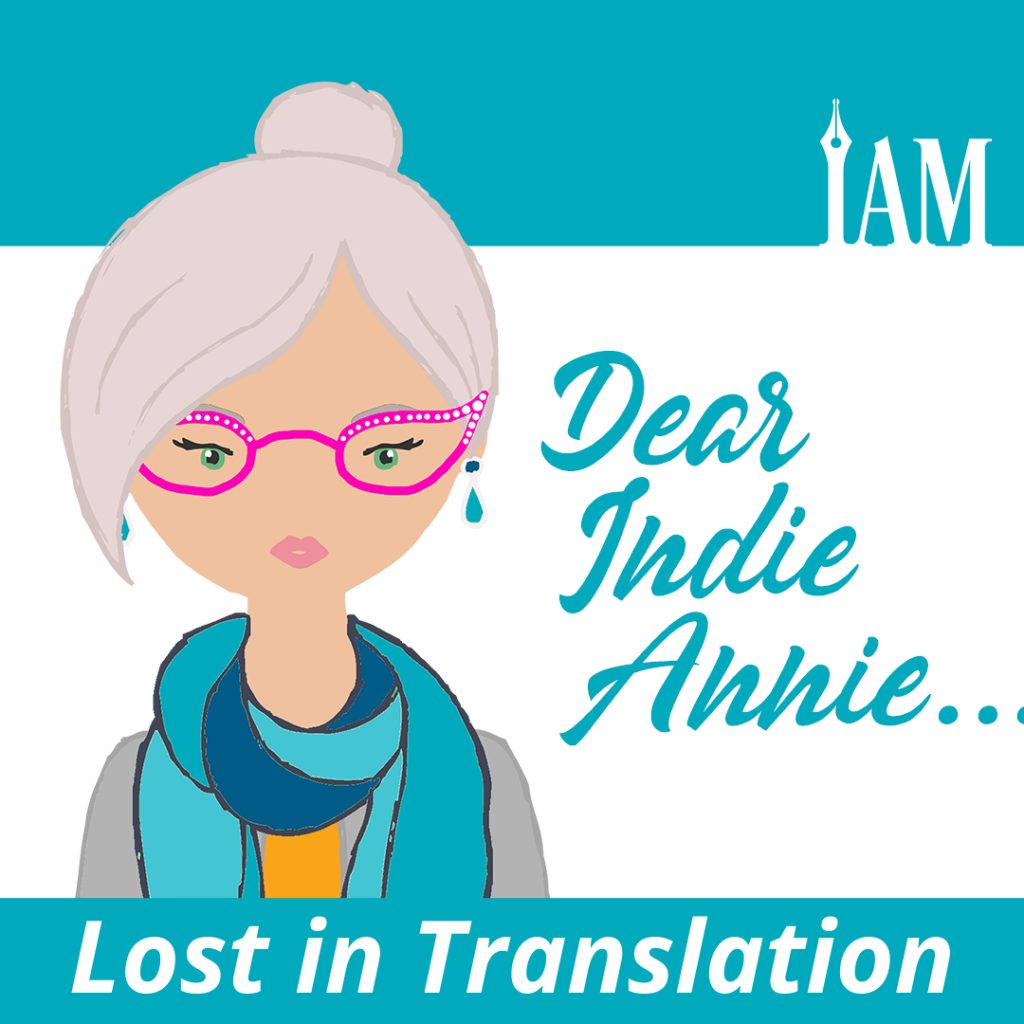I’ve just hired a new cover designer for my series, but English is not their first language. I want to make the process run smoothly. Any tips for working around a language barrier?
Lost in Translation
Dear Lost in Translation,
Oh, poppet, collaborating across cultures can feel as daunting as decoding hieroglyphics! But with patience and open communication, you can transcend language barriers. View this as a thrilling expedition with your design sherpa!
What you need, my dear, is your very own Rosetta Stone. It may take a few attempts to decode your communicative challenges, but if you love this designer’s work and they are practically perfect in every way for your little books, then it’s worth the effort. Bridging creative divides across cultures takes finesse, but clear communication paves the way. Let’s map out strategies for a fruitful, cross-pollinating collaboration!
First and foremost, lead with empathy and patience. Your designer is already operating outside their language comfort zone, so make them feel at ease. Default to kindness over bluntness when providing feedback. Deliver notes delicately, framing opinions as preferences: “I’m drawn to this style, but I’m curious about your take?” Encourage continued efforts despite any frustrations you may have. Remain positive—for example, say “Another approach could be …” rather than invoking negatives like “This isn’t working!”
Establish common ground by sharing samples that represent your desired aesthetic. Images truly are the universal language. Provide lots of visual inspiration—covers you love, branding guidelines, and even mood boards to convey your aesthetic vision without ambiguity.
Dare I suggest you use AI tools to express the ideas you have? A picture paints a thousand words, as they say. Put your emphasis on showing rather than telling—not poor advice for your books either, my dear—and use pictorial examples to reinforce adjectives like “vibrant,” “modern,” etc.
Eliminate as much translation guesswork as possible upfront. Before starting, take time to define design terminology on both sides clearly. Walk through concepts like “layout,” “motif,” and “tone,” and ensure you share a mutual understanding of these meanings. If there appears to be confusion, consider affordable, or even free, online translation services, and hire a professional interpreter for critical feedback exchanges.
Maintain an open spirit to fresh creative perspectives. Your designer’s outside vantage point may inspire innovative new directions you would never have considered. Celebrate this cultural exchange throughout the process, not just the final product.
Establish a transparent feedback loop and communication cadence. Determine if ongoing video chats with visuals or documented comments work best. Consider collaboration tools like Google Docs to integrate input seamlessly. Agree on reasonable turnaround times.
And, unlike your sweet aunt Indie, try to steer clear of overly complex sentences and flowery language. I am writing for effect. I am your sweet-natured literary godmother, employed to be grandiose in my vocabulary. You, on the other hand, sweet lost child, are embarking on a journey that requires the strategic use of the simplest words in your lexicon—unless, of course, you find that even with English as their second language, it’s still better than yours!
Most of all, extend grace and good faith from start to finish. This partnership will strengthen empathy and expand both of your visions. Ahead of you lies an exciting exploratory adventure as enriching as the book journeys you script. With mutual patience and goodwill, you can traverse any linguistic landscape. Now, get out those proverbial pens and maps; new creative vistas await, no translation required!
Happy writing,
Indie Annie
X

